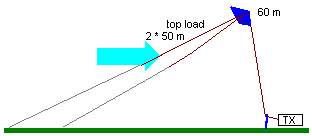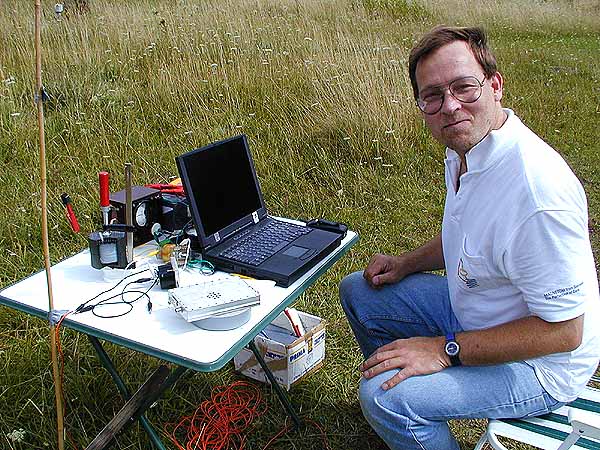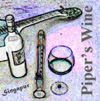 |
 |
[LF-Chat]
[LF-Operation]
[VLF-Operation]
[DK8KW LF-activity]
[LF-Utility stations]
[Miscellaneous]
[Guestbook]
[Links]
[How to contact me]
Dear group,
I'd like to share some thoughts about our recent VLF experiments.
Two-way earth-current qso DJ2LF-DF6NM:
On August 19th around 17:20 UT, Walter DJ2LF and I had a first two-way
VLF
qso on 8.96kHz cw over a distance of ...ahem.. a little over 200m.
Both of us
used about 20W, feeding 50mA into earth antennas with a base length
of
approx. 60m each. Even though Walter had received his own earth-signal
before
up to 1.3km with more optimized equipment, actually hearing each other
was
great fun for both of us as well as for the young amateurs of the da0yfd
fieldday group, who very actively participated in setting up the rigs.
![]()
Of course we had some discussions about whether this has anything to
do with
radio, or if we should rather view it as a distributed resistive voltage
divider... As the crossover between the reactive (or in this case conductive)
electrical nearfield (E~1/r^3) and the radiation field (E~1/r) occurs
at a
distance r=lambda/(2*pi), I would suggest 5.3km as a minimum dx for
a "real
wireless" qso on 9kHz.
4.5km with kite antenna:
Last Saturday (August 26th) I tried again to get a little further. Qrss
on
8969 Hz was generated by the notebook speaker output and amplified
to 20
watts, and my kite-borne marconi antenna was fed with 120mA through
a ferrite
loading coil, radiating up to 25uW ERP at 35m effective height. The
biggest
problem was keeping the heavily loaded kite up in an unsteady wind.
Werner
(DF1NH) had taken pictures of a similar (unsuccessful) activity a month
ago
(http://home.t-online.de/home/df1nh/Langstwelle/langstwelle.html).

The band was recorded with my rx at home, 4.5km away, and the 80MB wav-file
later analyzed using peak clipping and spectrogram at 0.4Hz RBW.
Theoretically, I had expected a field strength of 21dBuV/m. This time,
among
all kinds of 50Hz and 33Hz wanderers and other junk, I found my signals,
with
up to 14dB SNR. Bliss!

Earth current antennas vs. E-field verticals:
For small ranges, the horizontal E-field generated in the earth by 1
amp into
a dipole of length l and grounded at both ends is equal to the vertical
field
of 1 amp into a top-loaded monopole having an effective height h =
l. As the
resistive components of the input impedance are similar (one or two
ground
connections, eg. several 100 ohms at vlf), efficiencies are similar.
But the
vertical does suffer from its high capacitive series impedance (eg.
30
kohms), resulting in very high voltages with additional losses in the
matching coil and lossy dielectric surroundings. And of course its
much
easier to have l=300m of wire flat on the ground than to get h=30m
up in the
air!

DF6NM during the tests
From these arguments, earth current systems seem to be very advantageous,
and
the success of various good amateur experiments (eg. G0AKN's 10km record,
www.qru.de/vlf.html by DK8KW) indeed support the point. However, the
"killer"
is the exponential absorption in the conducting medium. This hard-limits
the
range of propagation to little more than very few skin-depths, which
is
delta=1/sqr(pi*f*sigma*mu), ie. 170m for average soil (sigma=10^-3
S/m) and
over 5km for extremely dry ground (10^-6 S/m) at 9kHz. Propagation
directly
through ground for more than the first few km thus must be rather hopeless.
However, there is a technique for earth antennas which uses the small
coupling between above-ground surface waves and earth waves. It has
been
employed in the US for the 76Hz ELF-transmissions to immersed submarines
(see
www.vlf.it). To be able to absorb power in the ground from a
vertically-polarized surface wave, the horizontal H-field has to induce
a
small longitudinal component to the electric field, which can then
be
detected by two ground electrodes. In the equivalent transmit case,
a ground
antenna's current returns in an average depth of delta/2, so it acts
like a
loop of area A=l*delta/2 and thus of effective height h=l*delta*pi/lambda.
For average soil, the factor is 2*5300/170=62, so in the far field
2km of
horizontal wire should be just as efficient as a 32m top-loaded vertical.
Comparison of noise and qrn at LF and VLF:
Earlier measurements of background noise levels an my qth gave approx.
-27
dBuV/m /1Hz at 137kHz on a quiet sunday morning, compared to +5 dBuV/m
/1Hz
between the statics at 9kHz. Thus noise seems to scale with frequency
as
-27dB/decade. Corresponding antenna noise temperatures (before losses)
would
be 86 dB/kTo @ 137kHz and 142 dBkTo @ 9kHz.
The statics on HF and LF often are bursts of white noise with durations
up to
a few 100 ms, which could be the high electron temperature in the flash,
radiated by the ionized channel while it is arcing. On VLF their appearance
is different, impulsive cracking sounds dominate. They seem to be directly
related to the harmonic content of the discharge current's initial
leading
edge. Noise limiting by amplitude clipping can be quite effective here,
as
the impulses tend to be short against FFT signal integration times.
73 de Markus (DF6NM)
|
|
Jörg, DL5ABE plays the banjo, I am the the fiddler!
Have Fun!
